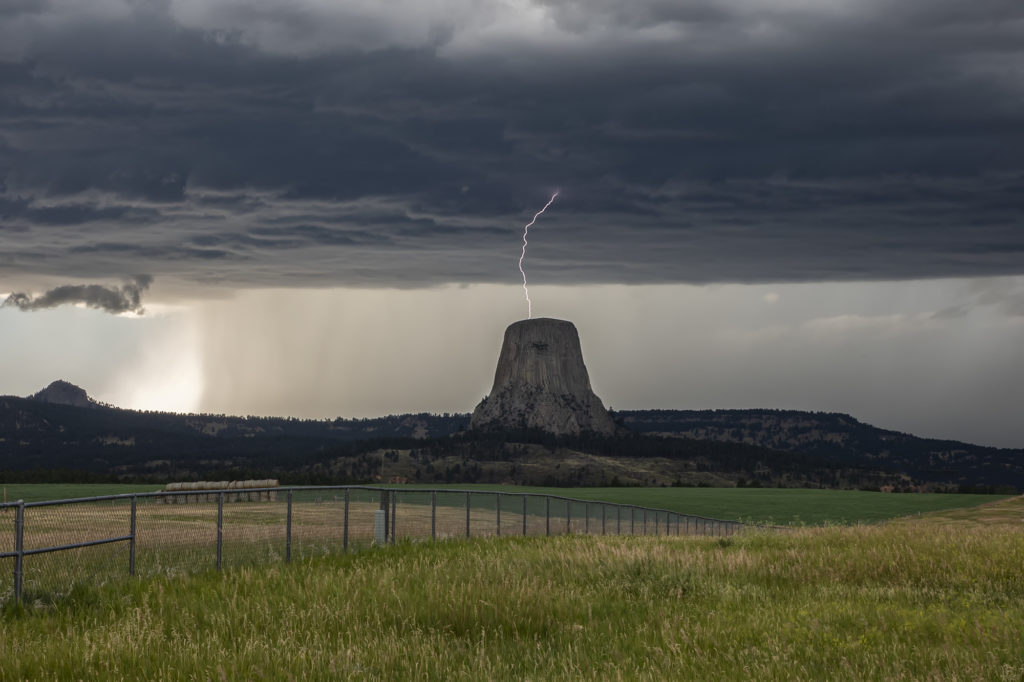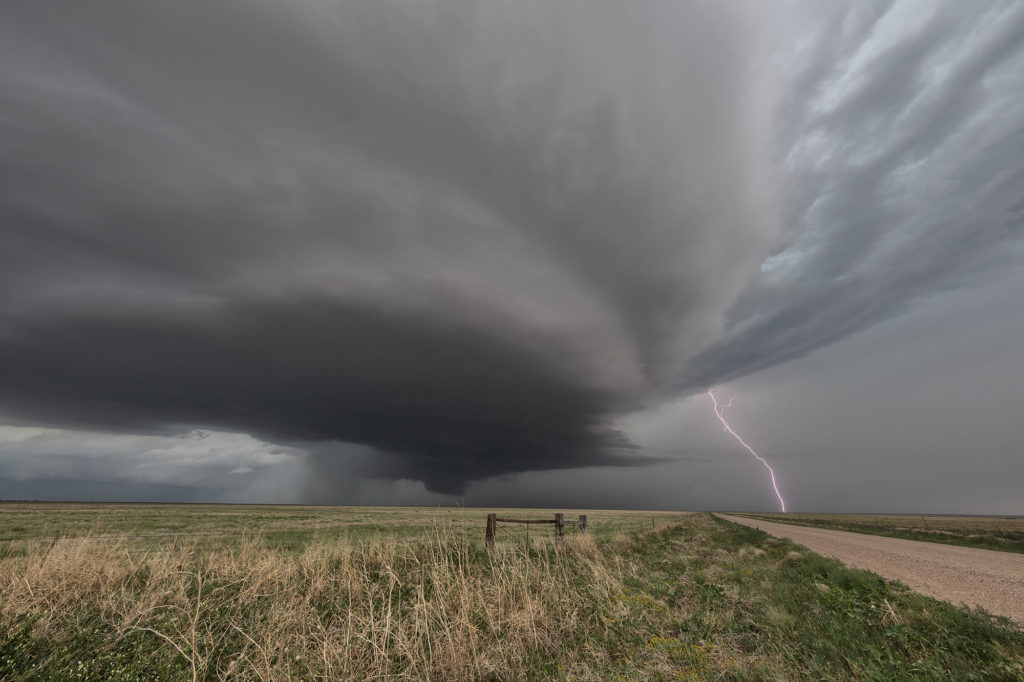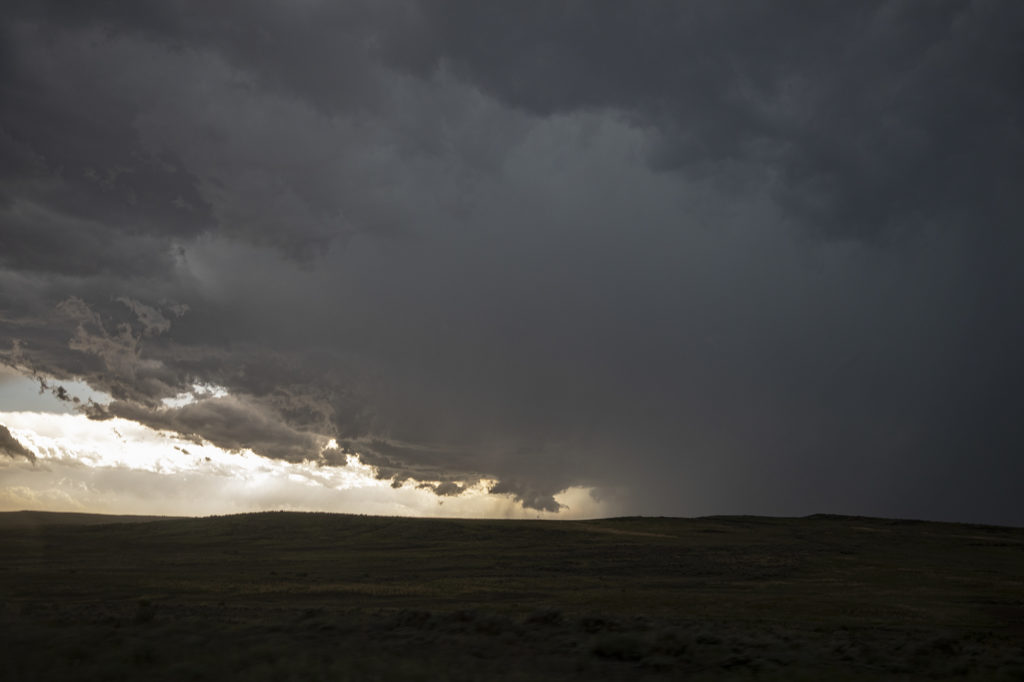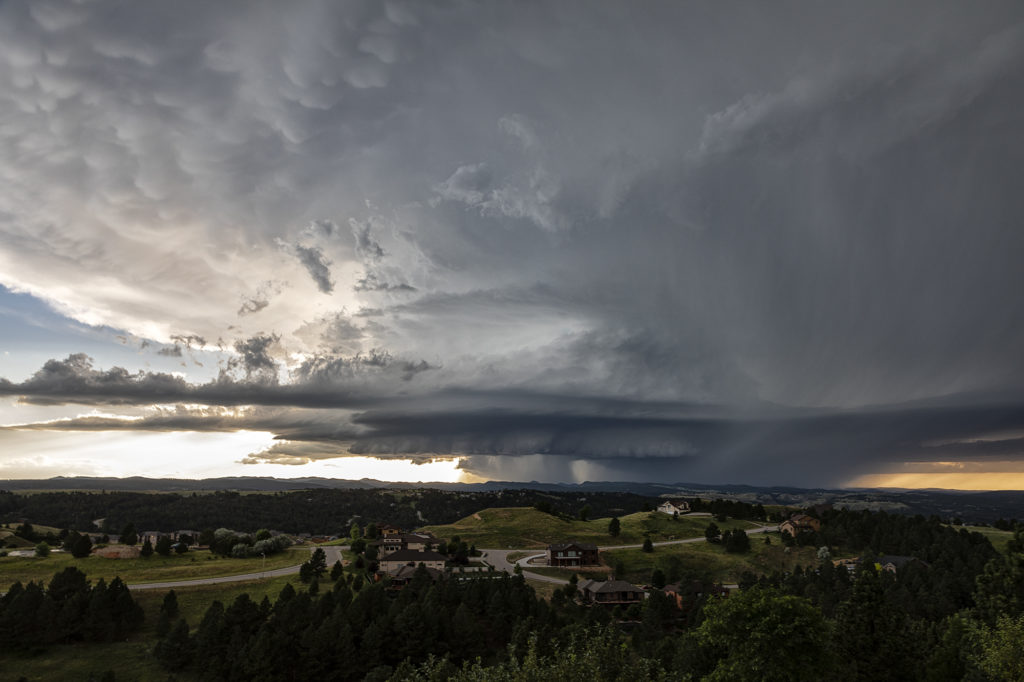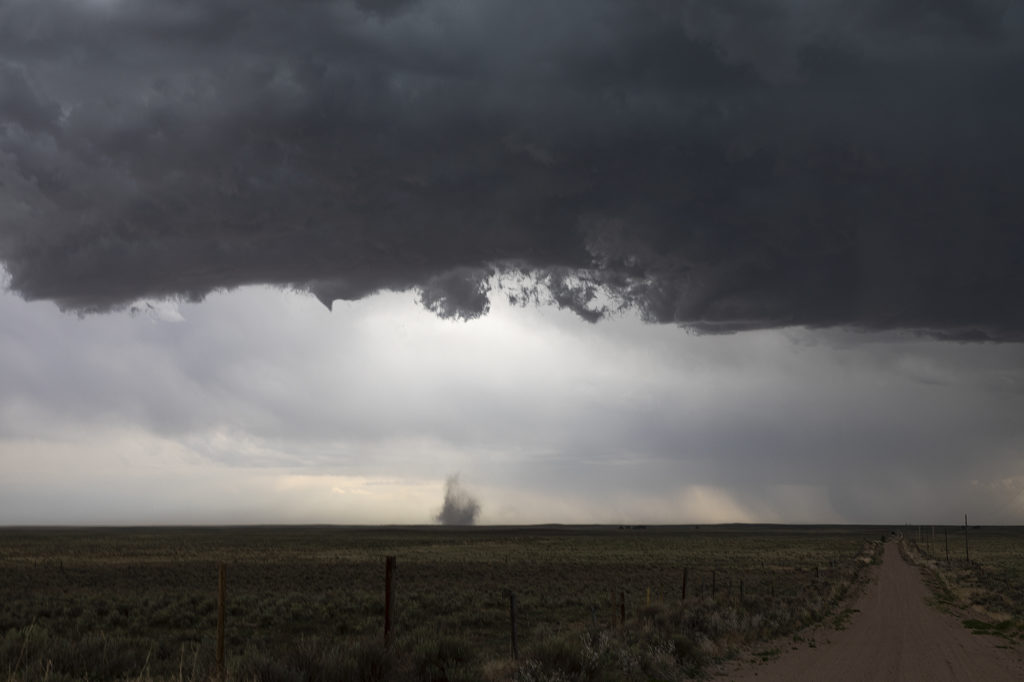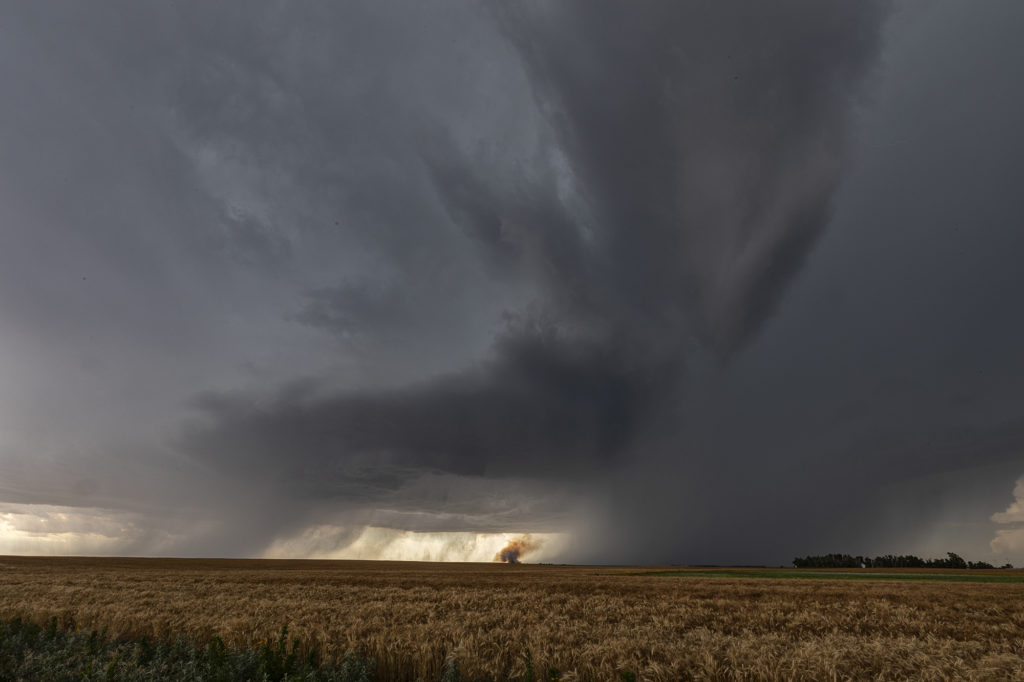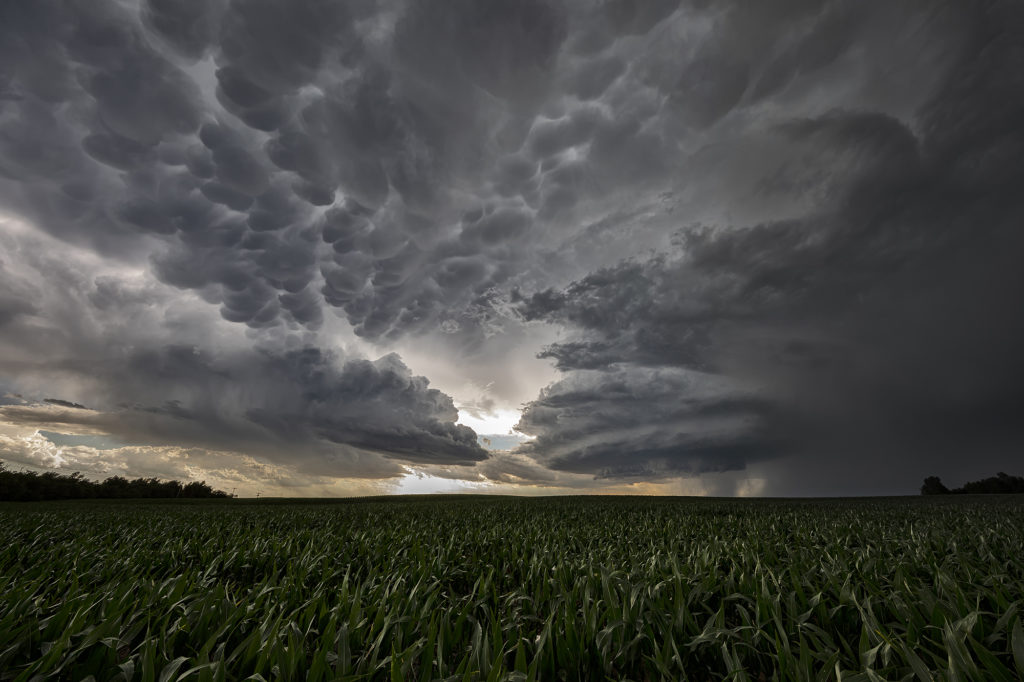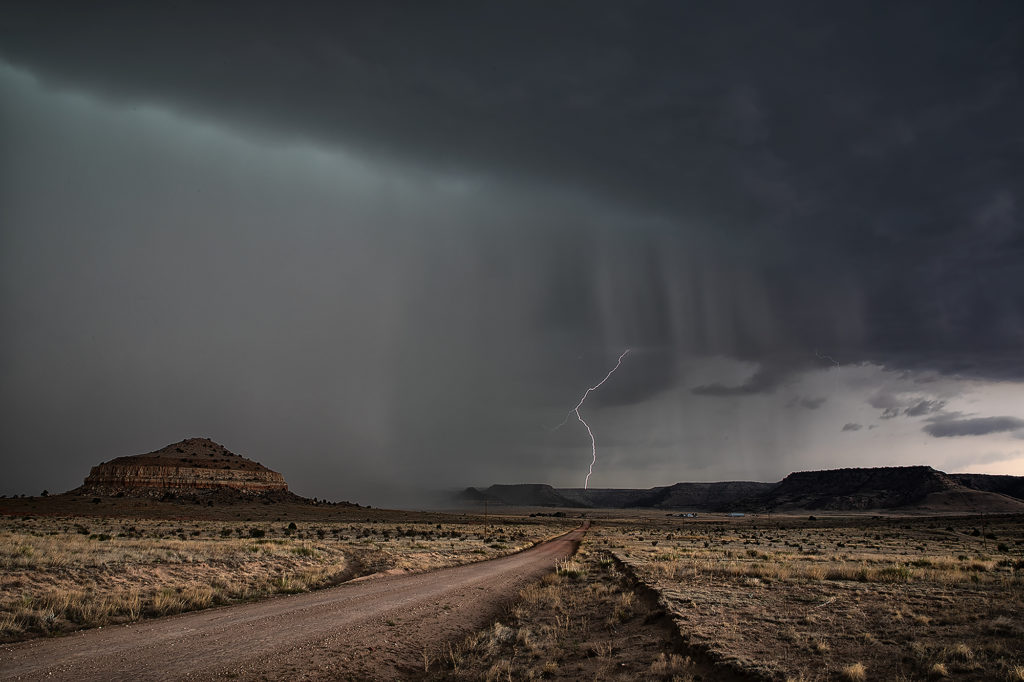The final tour day of our 2020 season brought us into southeast Wyoming to play in the upslope flow into the Laramie Range. Several storms formed in this region and tracked southeast towards Cheyenne and points east. Decent moisture and instability, coupled with moderate shear, would help storms become organized and develop into some pretty structured supercells. Our first storm, north of Chugwater, had nice structure and produced a lot of hail. It spun hard a couple times and at one time we thought it had some tornado potential. It get really messy so we decided to target a new cell southeast of Cheyenne near Carpenter. This storm was a treat to watch! We found an old abandoned car that became the centerpiece of our photos/video as the cell slowly dropped towards us. The storm’s structure was that of the classic “stack of plates” and was fun just to watch as it drifted towards us. Both of the storms we chased this day had great structure and were very photogenic. Enjoy the pics!
July 19th Devil’s Tower, Wyoming Beautiful Supercell
July 19th was a spectacular day! Good moisture, high instability, good wind shear and a boundary along the Wyoming/Montana border would set the stage for intense supercell development. One such storm formed northwest of Devil’s Tower and drifted southeast. As it crossed Devil’s Tower we had quite the lightning show! I managed to capture a bolt hitting the top of the tower! As the storm moved southeast near Sundance it became extremely electrified producing a CG every 3-4 seconds! At one point, it had an appearance like it was ready to produce a tornado. We lost visibility in the hills and could not confirm one way or another if it did. Later, a second supercell tracked southeast from near Buffalo, WY down to Lusk, WY. This storm constantly spun hard, had pretty structure and was also tornado warned numerous times! It’s structure was top notch and had various rotating wall clouds throughout it’s life. But, as continued to be the theme for 2020, storms had great structure but just couldn’t produce significant tornadoes. Overall it was my favorite day in July for chasing, and one we captured some incredible photos! Enjoy!
July 14th Southeast Colorado Tornado Warned Supercell
July 14th kept us in Colorado to chase off the Palmer Divide into southeast Colorado. A sagging cold front we push moisture westward into the Palmer Divide, causing storms to develop by mid afternoon. Those storms produced copious amounts of hail, but became undercut by outlfow and died. The boundary pushed south as more storms formed along it east of Pueblo. Near the town of Sugar City, one storm formed and spun hard. It quickly became tornado warned and stayed that way for a few hours. A couple of times, it had the look like it wanted to drop a tornado, but it never did. As it merged with numerous storms west of Lamar, the storm interaction with others caused it to produce a quick 1 minute spin up. The structure with this supercell was quite nice. It was also quite electrified! Eventually this cluster of storms pushed into western Kansas and weakened as we followed it east to Garden City. Great day! Beautiful storm and it certainly tried to get very interesting! Please click on a pic for a larger image. Enjoy!
July 13 Eastern Colorado/Western Kansas Supercells
July 13th was the second day of our Tour 9, Great North Tornado Hunt tour, and it took us east of Denver towards the Kansas border. Decent shear, limited moisture and CAPE, and an approaching dryline, would set the stage for high based storms to form. As the storms moved into Kansas, they intensified and the bases came down. We had a couple very pretty rotating storms in far western Kansas that were quite electrified. The final storm of the day was a very nicely structured LP supercell near Leoti, that spewed out numerous lightning strikes and intercloud discharges. I thought for a minute that it had some tornado potential, however the base lifted, the wall cloud dissipated and it eventually died as well. A fun day, great storms and super lightning. Please click on a pic for a larger photo. Enjoy!
July 6th/7th Northeast Wyoming/Southwest South Dakota Tornadic Supercell and Severe Storms
July 6th was an inbetween day for our tours. However, as we often do, if there is a decent set up, we’ll run one of our on call tours. That’s exactly what we did the 6th and 7th! On July 6th we started in Denver and blasted to southeast Montana where storms were forecast to form along a boundary with good instability and shear. We’ve seen numerous tornadoes in this region over the years and some outstanding supercells! Today would be no different! We made it south of Broadus, MT and turned east on a dirt road near Biddle. We had a great view of the developing supercell. As we continued east, the forward flank core caught up with us so Caryn had to push it a bit to get out of the heavy rain so we wouldn’t get stuck. Low and behold as we were blasting east on muddy roads, trying to get south of Alzada to head south towards Hulett, WY, our wonderful storm tornadoed. Couldn’t see it from our location, thanks to horrid road network. However, if you were north of Hulett, you had a decent, albeit distant view. We stayed with the storm as it crossed the Black Hills near MT Rushmore and onto the nearly plains. It became a stunningly beautiful supercell as it tracked towards the Badlands. Gorgeous!
On the 7th we played southeast Montana again. However moisture quality was much poorer than the day before. Storms formed along a boundary and became a squall line as they moved east. They were still pretty and offered some very photogenic moments! We stayed in front of them back to Rapid City, SD where we spent the night before returning to Denver the next day.
Please click on a photo for a larger image. Enjoy!
July 3rd Northeast Colorado Tornadoes
July 3rd brought us back to Colorado for the final day of the Photo Tour. Nature decided to give us some pre4th fireworks! A boundary set up north/south of a line from Ft Morgan to east of Limon. Intense storms formed along it and with a wind shift in place, two landspout tornadoes formed that we were able to witness. They lasted several minutes each before dissipating. Storms were quite sever with hail tennisball sized and lots of lightning as well. We intercepted the first cells on highway 71 south of Brush and followed the southward building line from there. Good shear, moderate CAPE, but limited low level moisture fueled the severe storms till eventually they gusted out and weakened. Fun final day of chasing for the tour before returning to Denver later in the evening. Please click on a pic for a larger image. Enjoy!
June 29th Theodore Roosevelt NP Tornadic Supercell
June 29th took Photo Tour #3 westward to Theodore Roosevelt National Park area where a triple point would set up and cause supercells to form. Strong shear, high CAPE values, good moisture and lift at the triple point helped to generate one intense supercell northeast of Wibaux, Montana that moved into western North Dakota. We positioned ourselves down wind to allow the storm to mature as it approached. A large wall cloud formed that started rotating with wrapping rain/hail engulfing it. A brief tornado occurred that we could see in the distance. Unfortunately there weren’t many roads to allow us to get closer or even stay with it. Numerous other storms formed and became quite a messy MCS. We stayed with them all the way to New Town, ND where another tornado warning was issued. A messy murky system approached as we decided to retreat and get out of it’s way. We headed on northwest to Williston for the night. Yours truly lost his cell phone as huge hail started falling and ended up driving back to the park in the middle of the night to find it. Success, it was found! (Destroyed and cracked, but it was found!!!) Please click on a pic for a larger image. Enjoy!
June 24th Southern Kansas Supercells
We had high hopes for some great supercells in southern Kansas on June 24th. The atmosphere didn’t disappoint! High CAPE, strong shear, moderate moisture and decent lift along existing boundaries would set the stage for afternoon severe thunderstorms. An explosive supercell formed in central Kansas mid afternoon and became severe. This storm produced hail to baseball size and high winds. It weakened as it remained nearly stationary and other storms formed south and west of it. A well structured supercell emerged and became very electrified. A grassland fire occurred and fortunately was put out before consuming any farmsteads. As it continued to move south/southwest, it became undercut by outflow and slowly weakened. It continued to produce very large hail and high winds during the remainder of it’s life as it slowly drifted south into far southern Kansas. A fun day of chasing with well structured storms and very large hail. We stopped and examined the hail stones we found up to tennisball sized. Click on a pic for a larger photo. Enjoy!
June 21st Western Kansas Supercell
June 21st looked like a big messy day. Forecast was for thunderstorms, including supercells to form along multiple boundaries in western Kansas. It was thought that storms would congeal into a large MCS and track into northern Oklahoma later. That is in fact exactly what happened. Storms formed first along a weak front in northwest Kansas and tracked south. Other storms formed along old outflow boundaries in southwest Kansas. Eventually they all merged in a large high wind producing MCS. Moisture was marginal, but shear and CAPE were fairly high. As they became outflow dominant, a fast moving convective system produced 80 mph winds and golfball sized hail as it tracked in the Oklahoma panhandle. It was a fun day for lightning, and a well defined shelf cloud formed with the complex. Please click on an image for a larger photo. Enjoy!
June 19th Raton Mesa, New Mexico Supercell
June 19th was the last day of Tour 7. The weather pattern kept us fairly close to home, with the set up over the Raton Mesa between Colorado and New Mexico. Upslope flow would push decent moisture into the region and thunderstorms would form by mid afternoon. Moderate CAPE and shear were also present as the storm intensified and moved eastward. The region is known for it’s lack of good roads, so we ended up on a few poorer gravel/dirt roads. We arrived as the storm was very intense, producing golfball to tennisball sized hail. Love the “hail core green” color to the clouds when they are suspending millions of hailstones in them. The region is very colorful with many red rock buttes and ridges in the area adding to the already pretty scene. The terrain has been very dry in 2020, so little vegetation was growing. Eventually the storm moved out over the Black Mesa area of the Oklahoma panhandle and weakened as it moved further east. A fun last day was a pretty storm and countryside! Click on a pic for a larger image. Enjoy!





